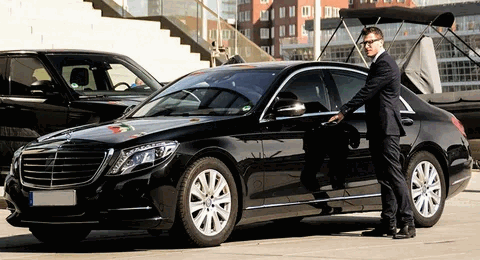Taxi Services vs. Public Transportation: Which Is Better for You
Transportation costs can significantly impact your daily expenses and travel budget. Whether you’re a daily commuter or a traveler exploring a new city, choosing the most cost-effective mode of transportation is essential. In this detailed guide, we will take a close look at the financial aspects of both taxi services and public transit, helping you determine which option is better for your wallet.
Transportation expenses can add up quickly, making it crucial to make informed choices when getting around. Let’s delve into the financial aspects of taxi services and public transportation to determine which aligns better with your goals. But before moving on if you need Airport Taxi services so make sure to check out flat rate taxi to airport for discounted Flat Rates.
The Cost of Taxi Services
Fare Structure
Taxi services typically operate on a fare structure that includes:
- Base Fare: The initial fee you pay when you enter the taxi.
- Distance Traveled: The fare increases with each mile or kilometer you travel.
- Additional Fees may include waiting time, tolls, or surcharges during peak hours.
While taxis offer door-to-door convenience, these costs can accumulate quickly, especially during rush hours or in busy urban areas.
Additional Fees
In addition to the standard fare, there may be extra charges for:
- Luggage: If you have substantial luggage or oversized items, be prepared to pay an additional fee.
- Tolls: If your route includes toll roads, the cost will be added to your fare.
- Airport Surcharges: When taking a taxi to or from an airport, expect to pay airport-related surcharges, which can be substantial.
Ride-Sharing Apps
The introduction of ride-sharing apps has introduced pricing variability based on demand. Increased pricing during peak times can lead to higher fares, making planning your trips carefully to avoid expensive rides crucial.
The Affordability of Public Transportation
Fixed Fares
Public transportation systems, such as subways, streetcars, buses, and trams, typically offer fixed fares regardless of the time of day or distance traveled. This predictability can be superior for budget-conscious travelers, as you always know what to expect.
Discounted Passes
Many cities offer discounted passes for regular commuters or tourists, allowing unlimited travel within a specified time frame. These passes can provide substantial savings for those who rely on public transportation frequently. Examples include monthly metro passes or tourist cards that cover buses and trams.
Eco-Friendly and Cost-Effective
Public transportation is often more eco-friendly and cost-effective in the long run, mainly if you use it for daily commuting. It reduces the need for personal vehicle expenses, such as:
- Fuel Costs: Public transportation eliminates the need to purchase gasoline or diesel fuel.
- Maintenance: Owning a vehicle entails maintenance costs like oil changes, tire replacements, and regular servicing.
- Parking Fees: In many urban areas, finding and paying for parking can be a significant expense.
Making Your Choice
Consider Your Needs
The choice between taxi services and public transportation depends on your specific needs. Taxi services may be suitable if you require door-to-door convenience, especially during off-peak hours or special occasions. However, be prepared for varying costs, especially during high-demand periods.
Budget and Frequency
If you’re budget-conscious and use transportation regularly, public transportation is likely the more cost-effective option. Calculate your monthly or annual transportation expenses, including potential savings from discounted passes and reduced vehicle-related costs. Additionally, consider the environmental benefits of reducing your carbon footprint through public transportation.
Flexibility vs. Savings
Ultimately, the decision hinges on the trade-off between flexibility and savings. Taxi services offer convenience but at a premium cost. At the same time, public transportation provides affordability but may require adherence to schedules and routes. Think about your priorities and how they align with your budget.
Conclusion
In the ongoing debate of “taxi services vs. public transportation,” the answer to which is better for your wallet depends on your unique circumstances and priorities. If you prioritize convenience and can accommodate occasional higher expenses, taxis might be your choice. On the other hand, if you’re looking for long-term savings and environmental benefits, public transportation is the more economical option.
Assess your needs, budget, and lifestyle to choose what’s best for your money and fits your financial plans and travel requirements. It’s not just about the cost but also the value and convenience each option brings to your daily commute or travel experiences.
Ultimately, your choice of transportation should enhance your financial well-being while ensuring you get where you need to go efficiently and comfortably. Whether you hail a taxi or hop on public transit, decide wisely and enjoy the journey! Read more!



